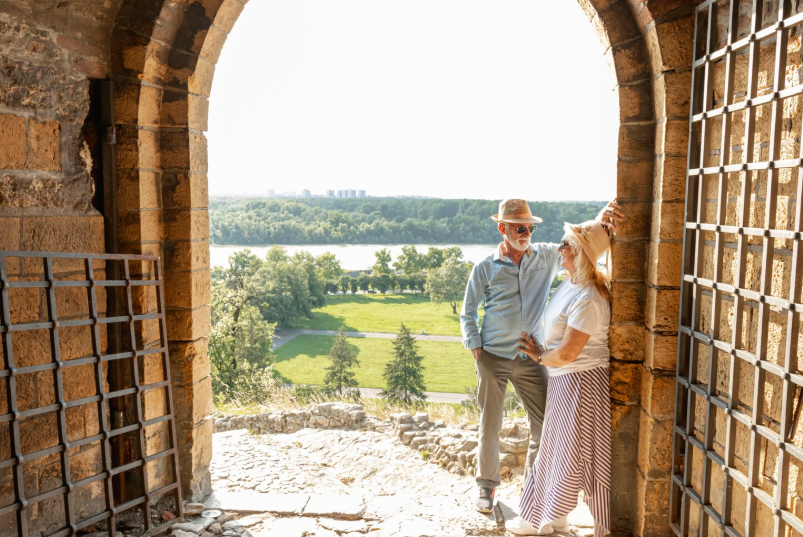
The Rise of Luxury Remote Work Retreats in Europe
The Rise of Luxury Remote Work Retreats in Europe
As organizations compete for talent and leaders reimagine how work, culture, and wellbeing intersect, a new model of corporate travel is emerging: the luxury remote work retreat. These curated getaways combine the infrastructure of modern remote work with the refinement and service of high-end hospitality. Across Europe — from coastal villas and converted monasteries to alpine chalets and private vineyard estates — luxury retreats are creating environments where productivity, team cohesion, and creativity thrive outside the traditional office.
Why the Trend Is Accelerating
Several converging trends explain why luxury remote work retreats have gained momentum. First, distributed teams and hybrid schedules have normalized remote work, reducing the practical friction of working outside a fixed office. Second, leadership teams now place greater emphasis on employee experience and retention; a thoughtfully designed retreat can act as a powerful retention tool. Third, executives are recognizing the return on intentional, high-touch gatherings for strategy, onboarding, and culture building — outcomes that are difficult to replicate in day-to-day virtual meetings.
What Defines a Luxury Remote Work Retreat
Not every offsite is a luxury retreat. The defining features include premium accommodations, dedicated workspaces with reliable high-speed internet, on-site support (IT and concierge), and amenities that support wellbeing — from private chefs and wellness practitioners to curated local experiences. Luxury retreats prioritize both comfort and utility: ergonomically designed workstations, soundproofed rooms for calls, and fast connectivity are paired with restorative offerings like guided hikes, wine tastings, spa therapies, and bespoke culinary programs.
Benefits for Companies and Teams
For directors and HR leaders, luxury retreats deliver measurable value. They accelerate onboarding by immersing new hires in company culture. They catalyze strategic alignment through focused in-person collaboration. They also provide space for creative problem solving away from day-to-day distractions. On the human side, retreats enhance employee wellbeing and morale, which translates to higher engagement and reduced attrition. For client-facing teams, shared luxury experiences can deepen relationships and facilitate higher-value deal-making.
Designing an Effective Retreat
Thoughtful programming is the difference between a memorable retreat and an expensive vacation. Start with clear objectives: team bonding, strategy alignment, skill development, or client enablement. Combine structured sessions (workshops, presentations, breakout groups) with ample unstructured time to encourage informal connections. Invest in a local host or retreat manager who understands both hospitality logistics and corporate needs — they ensure seamless on-the-ground execution, from AV setups to dietary accommodations.
Popular European Settings and Their Appeal
Different environments yield different outcomes. Coastal estates (Spain, Portugal, southern France) foster relaxed creativity and are ideal for client hospitality. Alpine chalets and mountain lodges (Switzerland, Austria, the Dolomites) concentrate focus and are well-suited for intensive strategy retreats or executive leadership work. Wine regions and private vineyard estates (Tuscany, Rioja, Bordeaux, Douro) combine gastronomic experiences with team-building activities tied to harvest and terroir. Each setting offers unique cultural experiences that enhance team bonding and offer memorable content for employer branding.
Budgeting and ROI
Luxury retreats are a deliberate investment; budgeting should reflect both direct costs (accommodation, transport, food, facilitators) and indirect value (time spent offline, productivity gains, retention impact). To evaluate ROI, set measurable goals in advance: reduced time-to-productivity for new hires, number of strategic decisions completed, employee engagement scores pre- and post-retreat, or follow-up sales/enrollment metrics for client programs. Directors should treat retreats as catalysts — short-term expenses that drive longer-term organizational returns.
Compliance, Accessibility, and Sustainability
When planning, ensure compliance with local travel and workplace policies, especially for international teams. Accessibility is essential — select venues that accommodate mobility needs and inclusive programming. Sustainability has become a core expectation at premium venues: prioritize retreats that demonstrate responsible sourcing, energy efficiency, and community engagement. Sustainable retreats not only align with corporate ESG commitments but also resonate strongly with employees who value purpose-led companies.
Practical Tips for Directors
1) Define success metrics before you go. 2) Choose a local partner or concierge with corporate retreat experience. 3) Balance structure with flexibility so deep work occurs without burning out participants. 4) Provide clear guidelines about availability and working hours during the retreat to respect both productivity and downtime. 5) Follow up with actionable next steps and a post-retreat evaluation to capture outcomes and learning.
Final Considerations
Luxury remote work retreats in Europe offer a compelling bridge between remote flexibility and the human benefits of in-person collaboration. For company directors, they represent more than a perk: they are strategic tools for alignment, culture-building, and talent retention. With careful planning, measurable goals, and a focus on wellbeing and sustainability, retreats can deliver disproportionate value — turning a few days away from the office into months of improved performance and engagement.
Stay Connected for More Travel and Lifestyle Inspiration. For more insights into travel, culture, and lifestyle tips, follow me on Instagram
@salvadorordorica. If you’re seeking professional translation and localization services to enhance your global ventures, visit The Spanish Group — your trusted partner in bridging cultures worldwide.





